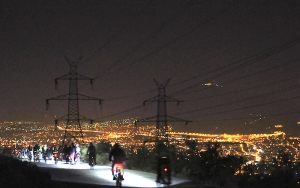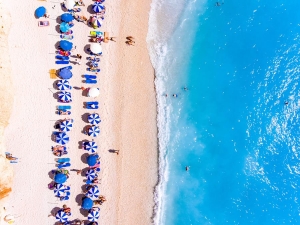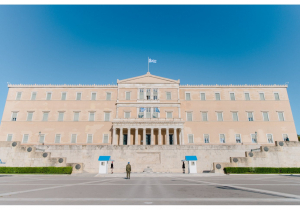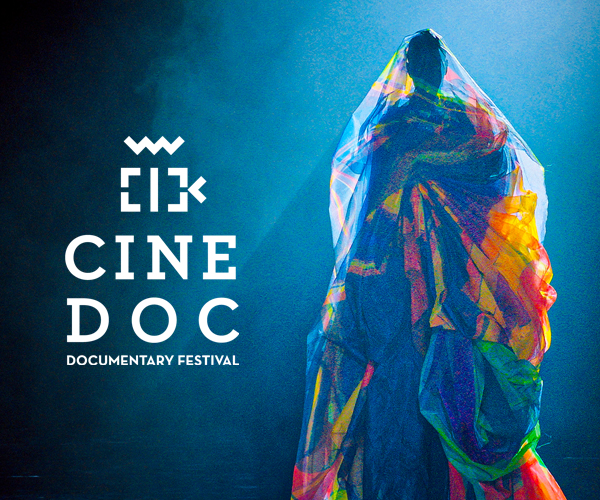XpatAthens
Athens Best-Of Restaurants
I’m sitting on a plane as I type this into my phone (pic included!) – proving to myself once and for all that geography is well and truly irrelevant. Even more so since I am learning about all that Athens has to offer, from 10,000 metres in the sky!
I’m reading ‘2Board’, the quarterly magazine of the Athens Airport. I’ve always liked this magazine – it’s slick, well produced and has a great mix of information about cool and interesting happenings in Athens, Greece and across Europe.
This issue has a special feature called ‘The Athens Food Lovers Guide’, their first annual Best-of list, dedicated to ‘celebrating the city’s most appetizing arrivals and standings of the past year’. That was enough to hook me for a front-to-back read.
Where to begin! Here are a few interesting selections – most of them have websites or at least Facebook pages to check out some photos and menus:
1. Best New Opening: Cokoovaya (modern Greek cuisine) – 2A Mexi Chatzigianni (+30 210 723 5005)
2. Best Bar Restaurant: Cinco (Japanese/Peruvian/Spanish fusion) – 50 Skoufa St. (+30 210 364 3603)
3. Best Brunch: New Taste (New Hotel) – 16 Fillelinon St. (+30 210 327 3000)
4. Best Street Food: Falafellas (ethnic/falafel) –51 Aiolou St. (+30 210 323 9809)
5. Best Atmosphere: City Bistro – City Link/Stoa Spyromiliou
6. Best Bio Restaurant: Nice N Easy – Kolonaki/Kifissia (+30 210 361 7201)
7. Best Value for Money: Thio Tragi (‘punk bistro’) – 36 Kidatidon St (+30 210 341 0296)
8. Best Cocktail Bar: 42 – 3 Kolokotroni St. (+30 694 824 2455)
And the list goes on… Best Cocktail List, Best Cigar Lounge, etc.
Now, granted, these are all ‘the best’ of Athens – and I’m sure we all have our own list to compare, depending on neighbourhood, mood and price point. But for a great start with some global standard options, check out the list or click through the 2Board’s online version below.
Until next week,
Jack
2Board (January-March 2015)
https://www.aia.gr/company-and-business/the-company/Corporate-Publications/2board
Destination Greece For Greek Wines In Canada
Much of Steve’s emphasis has been the lobbying and educating of Canada’s Liquor Control Boards, which control the sale of wines and spirits in teh country (or LCBs) and most notably the LCBO, in his home province of Ontario. Largely as a result of Steve’s efforts, the LCBO has selected Greece as the flagship country in its new “Products of the World” campaign at the LCBO shop located at 200 Danforth Avenue.
The massive exposure that Greek wines will receive is critical for a country and an industry that is reeling from years of recession and financial crisis and the fact that its happening in one of the biggest cities in North America is a huge push for Greek wineries.
Consumers will now be able to find over 90 wines and spirits from all over Greece, creating the largest selection of Greek wines available in one store outside of Greece.
To read this article in full, please visit: PappasPost
Scenic And Smoke-Free Cafes In Athens
For those who aren’t familiar with smoking habits in this part of the world, smoking is still a widely accepted habit. It is very common to see customers lighting up freely at an indoor cafe, restaurant or tavern. However, if you like to enjoy your coffee smoke-free then Marissa Tejada of Travel Greece Travel Europe gives us some great options as she explores and shares with us her list of scenic and smoke free indoor cafes in Athens.
Freeday Group Cycling Every Friday Night In Thissio
A group of people from Athens started the Freeday initiative, a group who meets every Friday night around Thissio for a long cycling session. Freeday was started about 8 years ago and what started out as a small weekend ride for cycling enthusiasts, the group has now grown to over 2,700 members!
The ride normally starts from Thissio - Monastiraki at 21:50 and ends around 3:30 in the morning in the same area. The ride can last from 4 to 6 hours, cycling 30km to 50km, and the route is different every week! The course to be taken is not announced but its destination is posted on Facebook the day before, in the form of a puzzle. The mystery is discussed by riders along the way, bets are placed and guesses are made as part of the fun involved.
Admittedly, Athens does not possess ideal infrastructure for cycling, while, making things worse, local car drivers are not accustomed to the idea. Amid such unfavorable conditions, the power of plenty is the only solution. The ritual has been maintained over the years.
“The experience serves as a good school for learning how to get around Athens on a bicycle. You are taken into consideration by car drivers when part of a large group. Over the years, of course, progress is being achieved and group rides are nowadays organized virtually on a daily basis by groups and municipalities. It’s also a trend, a solution for tight finances, as well as a form of exercise,” noted Antonis, a regular participant of the Thissio rides every Friday night. “Cyclists and car drivers can co-exist with a bit of overall cooperation, even if cycling lanes are not available in Athens,” he added.
Fascinatingly, every Friday night, Freeday draws together individuals who are engaged in very different lines of work during the day. The ritual has established close friendships. Asked whether he could share any unique stories from the weekly rides, Spiros, one of the group’s most avid members who helps design the routes, responded: “The difficult rides during winter, when it is raining, are unique as Freeday is staged every Friday, regardless of the conditions – except for certain national holidays. We get the biggest turnout at the end of July when we organize the Tour d‘ Athenes, which covers roughly 140 kilometers and lasts all night. But you get to see a magical sunrise at the end of it. The rides to Sounio and Penteli, to its observatory, rank among the most beautiful experiences.” Asked whether the group cycling experience has changed his life, Spiros exclaimed: “It rejuvenated me,” adding that “I also met this guy,” offering a fellow rider to his side an embrace.
To read this article in full, please visit: Greece Is
Freeday Facebook Page: Click here
June 5th - A Summer Escape
Navarino Challenge 2020: European Long Jump Champion Miltos Tentoglou Honors Kostis Tsiklitiras
The Olympic sport of standing long jump is reviving in Pylos
Navarino Challenge, honoring the birthplace of Kostis Tsiklitiras, the world-famous legend and gold Olympic medalist who was born in Pylos, Messinia, will present the standing long jump activity for the first time, on Saturday, October 17. The European long jump champion, Miltos Tentoglou will be the honoree person and ambassador of this activity. The first Greek athlete to win a gold medal in this sport in European championships along with his coach George Pomaski will provide people of all ages with an opportunity to try out their jumps and attempt to surpass Tsiklitiras’ world record of 3.47m.
In the context of his participation this year, the European champion, Miltos Tentoglou stated: “I am very excited about this event. Standing long jump was one of the most beautiful competitions and it is now considered as one of the best exercises to measure precise jumping. It is also a good opportunity for people to see and experience a real race while being entertained”.
Respectively, the top track and field coach George Pomaski stated: “In such initiatives, we are always willing to participate, in order to honor and never forget the history of sports. Sports endured, stopped wars and rivalries, united continents, and fought racism. Standing long-jump is a very useful exercise for gymnastics, that we even use today because it is an important indicator of the explosiveness of a jumper. It has elements from the long jump. It is important to highlight the region through our participation, as it is the place of origin of the Olympic medalist Tsiklitiras. We must never forget such athletes and we need to preserve our history”.
Pylos Triathlon Kids: Educating young people through sports
Navarino Challenge will include for the first time in its program the highly successful Pylos Triathlon Kids organized by Pylos-Nestor Municipality, on Saturday, October 17. The event includes triathlon races with the participation of children from 4 to 18 years old. The young fans of sports will have the opportunity and the joy to run on 2 beautiful routes, to swim in the picturesque port of Pylos with the background of the historic island of Sfaktiria, in the clear blue waters of the Ionian Sea and to ride a bike in the stunning Messinian small town, in the presence of Olympic medalists and world champions. Children will be divided into four age categories: Super mini: 4-7 years old, category 1: 8-12 years old, category 2: 13-15 years old, and category 3: 16-18 years old.
Starting from Poseidonia in the port of Pylos, on Saturday, October 17, a sea kayak tour will be held on the island of Sphacteria for the second consecutive year with the support of Explore Messinia. Participants will paddle towards the inside of the Navarino Bay exploring the coastline of Sphacteria. For entries: welcome (at) exploremessinia.com
Navarino Challenge Beach Volley Tournament
Overlooking the sand dunes and crystal-clear waters of the Ionian Sea, The Dunes Beach will host the Navarino Challenge Beach Volley Tournament for the first time. The Olympic sport of beach volleyball returns with the former international Greek volleyball player and record holder of participations with the Greek National Team, Michalis Triantafyllidis, as its ambassador. On Saturday, October 17, the tournament will include separate categories for men and women, while on Sunday, October 18, the tournament will be mixed. During this weekend, the well-established beach volleyball lessons by Samsung will also be held. All beach volleyball activities are carried out with the support of Triantafyllidis Beach Arena. For registrations and more information: info(at)beacharena.gr
Tournament’s organizer Michalis Triantafyllidis stated: “This year, during the top wellness event Navarino Challenge, we provide Beach Volleyball fans with an opportunity to take part in an exemplary organized tournament, on one of the most beautiful beaches in Greece. I could not be happier”.
Accommodation Packages
Enjoy a weekend full of outdoor wellness activities for people of all ages. For more information on accommodation packages at The Westin Resort Costa Navarino, you may send your email to navarinochallenge.com or call Vita N Travel at +30 210 3249070.
The top Greek rental company Avance, as the event’s official car rental partner, provides participants of Navarino Challenge with an opportunity to make their reservation, with a 15% discount on the official price list, for any vehicle of their choice regarding their travel to Messinia during the period of the event. In terms of bookings, participants need to send an email to reserv(at)avance.gr
Athens Unpacked Episode 5 - Taking To The Streets
Thank you This is Athens for your contribution as an XpatAthens Partner.
Experience Park To Open At Elliniko On Monday
The “Experience Park” covers an area in excess of 70,000 square meters and constitutes an integral part of the Metropolitan Park. Five hundred trees have been planted on the site alongside 55,000 other plants – all Mediterranean species.
It further features a water fountain, a children’s playground, and the Zen Garden, ideal for relaxation.
It also has a Christmas tree, which will remain in place until January 9.
Originally published on: ekathimerini.com
Embracing Our Uniqueness: How To Teach Our Children The Importance Of Self-Love
Self-Love: The Cornerstone of Psychological Well-Being
We often confuse self-love with narcissism, but while the latter is a personality disorder, the former is the foundation of a healthy and fulfilling life. Self-love is not about self-obsession or vanity; rather, it is essential for cultivating a positive relationship with oneself.
Numerous studies have revealed the tangible benefits of self-love. Individuals who cultivate self-love tend to have higher self-esteem, emotional well-being, and improved overall welfare. When people love and accept themselves, they see themselves as valuable, capable, and worthy of happiness, which in turn enhances their confidence in various aspects of life.
Most importantly, self-love plays a critical role in strengthening mental resilience. When children love themselves, they develop an inner strength and confidence that helps them respond to life's challenges. They become less dependent on external validation, making them more adaptable and better equipped to handle setbacks.
Teaching Self-Love to Our Children
Be Role Models: Children learn by observing the adults in their lives. If we love ourselves and demonstrate it through strategies like positive self-talk, our children will follow suit.
Encourage Open Communication: Create a safe environment for children to express their thoughts and feelings without fear. Encourage them to talk about their insecurities and fears, and provide empathetic, non-judgmental support.
Promote Self-Discovery: Every child needs to embark on a journey of self-discovery, and the role of every parent and guardian is to be a companion, not a captain. Children will discover their interests, likes and dislikes, and dreams for the future on their own. We should encourage them to engage in activities that bring them joy and a sense of fulfillment, celebrating their achievements, no matter how small.
Limit Negative Influences: Childhood is generally a very fragile period, and a child’s self-perception can be negatively affected by external factors like social media. Talk to children and teach them to use critical thinking to reject unrealistic beauty standards and ideals of success.
Provide Unconditional Love: Attachment theory highlights the importance of a secure emotional base from which children explore the world and, by extension, themselves. Remind children that your love is unwavering and not dependent on their achievements or behavior. Only then will they learn to love themselves, day by day.
Incorporating these strategies into our parenting is vital for instilling the value of self-love in children. This lays the foundation for a more confident and emotionally healthy future.
As we embark on this journey together, we must remember that self-love is not just about feeling good about ourselves. It is an ongoing process that equips us with the courage and resilience to face difficulties, and it is the only way to achieve true happiness!
My Week in Athens… Dec 20
Or are you like me, and buy all gifts (big and small) online?
I really enjoy Christmas, I love the lights, the decorations, the crowds, the general ‘Christmas spirit’. This year will not be an easy one for many families in Athens, to be sure. But I think a lot of us get a huge kick out of the whole festive season…
As far as filling up the (small) stockings on my list, I must admit that even when I ventured down to Ermou St. or to The Mall in Marousi over the past days, I didn’t cross anything off my list. Lots of people, lots of activity, lots of Christmasy fun - but zero bags of goodies.
Appropriately enough, I’ve had lots of luck using Skroutz (‘Scrooge’). This is a site that compares 100’s of online shops across Greece, for all kinds of products – from mobile phones to kitchen accessories, from air conditioners to bicycles and baby gear. The site has a great interface, accurate price comparisons, and with a few easy clicks you’ve found, ordered and paid and sit happily waiting for your exciting delivery.
I wish everyone out there a happy holiday and an even better 2013 – let’s make it count.
Until next week,
Jack
www.skroutz.gr
In this weekly space, keep up with ‘Jack’ as he navigates daily life in Athens… Anecdotes, stories, hits & misses, the good, the bad and, well, the rest…













